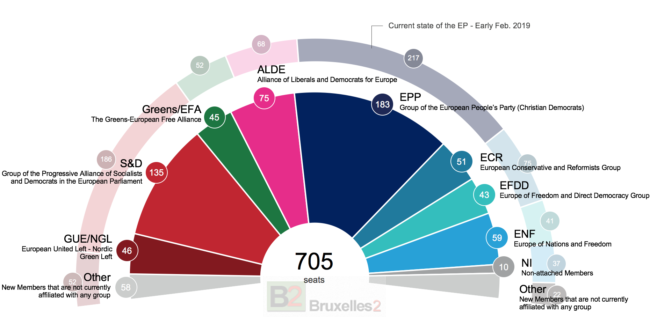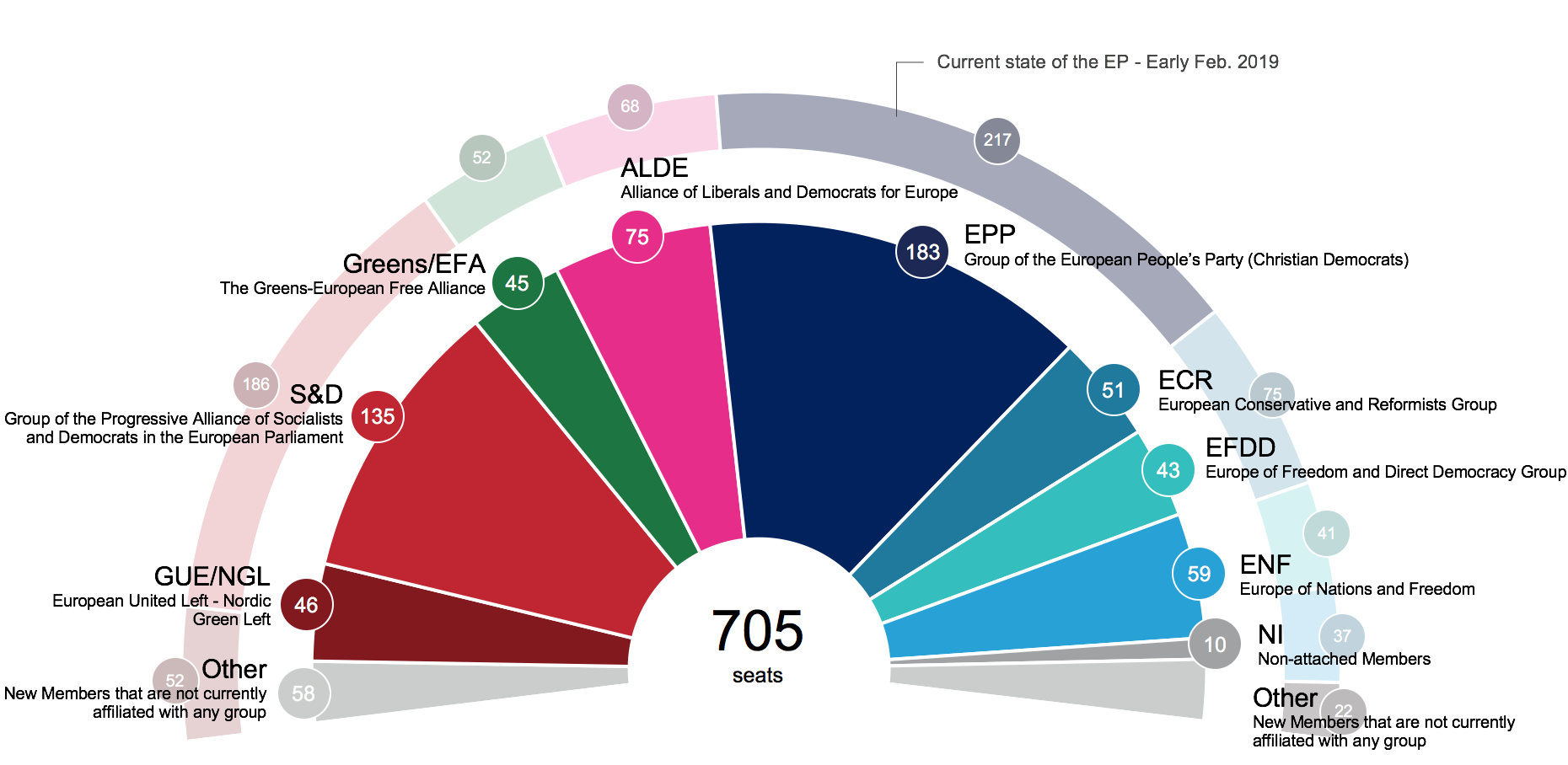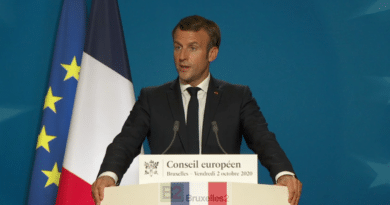Elections 2019: the EPP-S&D axis loses its absolute majority
(B2) The first projections in seats of voting intentions in the European elections have been unveiled by the European Parliament

These first projections unveiled on Monday (February 18) will be updated every two weeks until April, then every week until May 23 (1)
First trends
If we voted today in the Europe of 27 (excluding the United Kingdom), the 705 seats in the European Parliament would be distributed as follows (in brackets the evolution figure):
183 seats for the EPP Christian Democrats (which includes Les Républicains) - against 217 today. The European People's Party (the right) remains the leading group but has lost 1 seats. (- 34 points)
135 seats for the Social Democrats of the S&D (which includes the PS) - against 186. The Socialists and Democrats maintain their second place but with 51 fewer seats. (-6 dots)
75 seats for the Liberals and Democrats of the ALDE (of which the Modem is a part) - against 68. The Liberals gain a rank, taking 3rd place in ECR and 7 seats. (+1,6 points)
59 seats for the national right ENF (which includes the National Rally) - against 37. Stronger push for the far right which almost doubles its deputies with 22 more, and goes up from the last to 4th place. (+3,4 points)
51 seats for the ECR conservatives - against 75. Fall of 24 deputies for the Conservative group. (-2,7 points)
46 seats for the left GUE (which includes the Left Front or La France insoumise) - against 52. Relative stability for the Communists and the extreme left. (-0,4 point)
45 seats for the Greens - against 52. The group does not benefit from the weight taken by the Greens in certain countries, but it does not unscrew (7 deputies less, -0,5 point).
43 seats for the direct democracy group EFDD (which includes the 'Patriots' of F. Philippot) against 41. two seats (+5 points).
10' unregistered' - against 22.
58 'unaligned', they are in the 'Other' category, because they are not currently attached to an existing political group.
NB: You have to be careful with rough comparisons, the European Parliament went from 751 to 705 seats, losing around fifty seats. From where a necessary equalization between the old and the new hemicycle. This is the figure that we indicate in parentheses, allowing us to assess the loss in real terms.
The loss of the majority of the grand coalition
As a first lesson, we see that the major parties in the European Parliament (S&D and EPP) which form the grand coalition are not only those which lose the most relatively, but they also lose their absolute majority. The extreme right is gaining ground, as well as the ALDE liberals to a lesser extent. The declines of the other groups remain more relative.
No big anti-European push
There is, however, no great populist, anti-European upsurge, as some predict or fear. But rather to a consolidation of the anti-European 'bloc', concomitant with a slow erosion of the pro-European parties. There are two main reasons for this: 1° this surge had already taken place in 2014; 2° we are witnessing the departure of the British MPs who formed a large part of the troops of the Eurosceptic groups and thus limit this push. This corresponds in fact to our first analysis carried out at the end of last year (read: Europeans 2019. What changes to expect?).
Many unknowns
This projection is only a photograph, with existing groups. There are eight political groups today. But who can bet on their number to come, as well as on their format? What alliances will they make? An important unknown figure in particular on the attachment of the 5 Star Movement in Italy (the party of Luigi Di Maio)?
A significant number of 'unclassified'
The 'others' category is relatively large with 58 members, or nearly 8% of the European Parliament. Enough to allow certain groups to progress (or not). There are parties that have not expressly declared their attachment to an existing group, such as La République en Marche (LREM). Although the party of French President Emmanuel Macron has not failed to indicate its intention to join the centrist group of Liberals and Democrats of ALDE, there is no formal commitment yet. " An oral statement of attachment is not enough, you need a commitment, a written statement says an expert in electoral matters at the European Parliament.
(Emmanuelle Stroesser, with NGV)
- These projections have been compiled from a selection of national surveys carried out in early February 2019 in the Member States and aggregated by Kantar Public on behalf of the European Parliament.
Read our file No. 67. European elections 2019
Read also: European Council, Commission, High Representative… Who to occupy the top European jobs in 2019?


